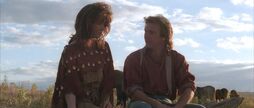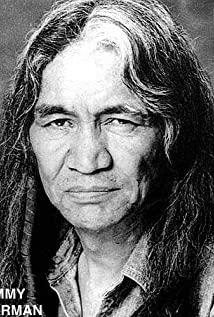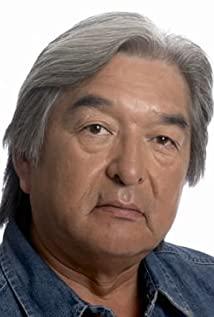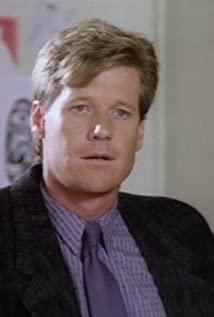The fourth Thursday in November is Thanksgiving Day in the United States.
In 1620, the "Mayflower" carried 102 Puritans who had suffered religious persecution in England, set off from the Netherlands, and finally arrived on the coast of Massachusetts Bay. These good men and women hope to live freely according to their religious wishes in this uninhabited land on the other side of the Atlantic. However, their trip to the New World was nearly aborted in the cold winter of that year.
When the Puritans were suffering from hunger and cold, the Native American Indians sent them relief supplies and taught the Puritans the laws of hunting, fishing, and planting. Finally, with the help of the locals, the immigrants from the New World achieved a bumper harvest. In order to thank God, the devout Puritans held a grand banquet in late November 1621, and invited the Indians to celebrate together to thank God for saving lives. The banquet lasted for three days and three nights, and later generations generally believed that this was the origin of Thanksgiving.
Therefore, when it comes to Thanksgiving, there is always a love-hate relationship between white immigrants and Indians. The winter of 1621 was probably the best period of white-Indian relations in the history of the American nation, bar none. As the colony continued to expand, the tyranny of the Indians by whites turned into genocide. The idea of "thank the Indians" originally contained in Thanksgiving has gradually faded, and it has completely become a festival of "thank God".
There are many dramas in the American film industry that reflect the development of the Western West, and it is customary to refer to such themes as Westerns. The Indians in the early Westerns always appeared in stereotyped images of murderous, savage and backwardness, such as "Flying Off the Mountains", "Red River", "Noon" and "The Searchers". As the Indians who were conquered and even slaughtered in the westward movement, unfortunately, they became a necessary supporting role in Western films, and often only synonymous with the detested and detested barbarians. Even in science fiction films, the image of Fox's famous alien villain "Predator" draws heavily on Indians.
In 1990, a film about the integration of white officers into Indian tribes with profound humanitarian connotations was born. The film made a profound reflection on the history of the American West, and won the 63rd Academy Award for best picture and best director in one fell swoop. Waiting for seven awards has also brought new vitality to the Western film theme that was almost dead at the time. We can still see imitations and tributes to the film in many works of later generations, such as "The Last Samurai", "Avatar", "The Revenant" and so on.
The film is "Dances with Wolves".
01 Man and Wolf
In the nineteenth century, the American Civil War broke out. The ruthless flames of war raged across the Americas, eating away at every tortured creature.
The protagonist Dunbar is one of them.
He suffered a leg injury during a battle and learned from a doctor's conversation that he would be amputated.
As an officer of the Union Army, the death of Ma Ge on the battlefield is the only destination that Dunbar believes at this moment. So, he left the field hospital, rode a fast horse, and wanted to take a suicidal charge from the stage of life.
But the goddess of luck was fond of him: the Confederate bullets failed to hit Dunbar, and the Union army was greatly encouraged by Dunbar's heroic deeds. They rushed to the Confederate positions like a tide and won the battle.
This accident turned Dunbar from a martyr who was about to die into a hero admired by thousands of people.
The Union general personally consoled him and ordered his own physician to cure Dunbar's legs. The general promised Dunbar that when he recovered, he would be free to choose his quarters.
The recovered Dunbar chose the wild frontier of the west.
In fact, it is not difficult to understand that Dunbar saved his life from the god of death and has long been reluctant to return to the battlefield. At this moment, he just wanted to be close to nature and feel the idyllic scenery that was completely different from the industrialized towns. Therefore, the unexplored wilderness of the American West is a good place to go.
However, God made a joke with him again. The senior officer in charge of arranging the post committed suicide because of mental trauma, and the coachman who sent Dunbar to the station was also shot and killed by the Indian Pawnee on the way back.
Since then, Dunbar's identity and past have been unknown. He became the wanderer of the West, the rootless grass of the wasteland. He was accompanied by only a horse, a gun, some munitions and a shabby hut left by a former officer.
Dunbar has seen the horrors of the battlefield, so the current desolation seems to him like a fairyland on earth. During the day, Dunbar galloped across the grasslands on horseback. At night, he wrote his diary alone under the oil lamp.
Words have become Dunbar's silent confidant. Dunbar admitted in his essay that the current life is exactly what he yearns for.
One day, Dunbar stumbled upon a bony wolf. He just wanted to shoot with a gun, but he saw that the other party did not pose a threat to him, and in this wasteland, apart from loving Masisco, it was the only one, and it was a rare companion.
So Dunbar named the wolf after the color of its front paws—two white socks.
Since then, the two White Sox have often approached and followed Dunbar. Dunbar took care of the two White Sox in the diet, and the two White Sox often gave Dunbar back game. Over time, the two lonely souls became friends.
Having said that, the film is called "Dancing With Wolves", and we can directly interpret the first layer of meaning: the relationship between Dunbar and the two white socks.
02 Whites and Indians
One day, an uninvited guest broke into Dunbar's life: an Indian was looking at the thatched hut and wanted to snatch his beloved horse.
Dunbar was just about to take a bath when he saw his horse being led by the sheep, and he didn't care about dressing, and went straight to the native. This frightened the Indian, who staggered on his horse and galloped away.
This native is not an ordinary person. He is a wizard of the Indian Sioux tribe. His name is Kicking Bird, and he has a pivotal position in the tribe.
The Indians know that the cold weapons they use are not worth mentioning in front of the white guns, and they keep a distance from the white civilization every day, but the development of the West is going on all the time. Unlike the Pawnee people mentioned above, the Sioux people advocate peace and are unwilling to conflict with other races, and their living territory is becoming increasingly narrow.
In the evening, the Sioux discussed the daytime experiences of Kicking Bird by the campfire. Kickingbird hopes that he can communicate with Dunbar on behalf of the Sioux tribe, while many young combative warriors want to solve problems by force, such as this "Smell in the Wind".
On the other hand, Dunbar stepped up his guard against possible incoming Indian tribes.
One day, while on patrol, he saw an indigenous woman covered in blood and emotionally unstable.
The kind-hearted Dunbar took the woman all the way to find her, and finally handed her back to the Indian tribe - the Sioux tribe.
Kicking the bird clearly saw the nature of Dunbar's kindness, and the Indian wizard was full of sympathy for Dunbar at the moment.
The next day, Kicking Bird and Feng Zhongfang came to Dunbar's station to negotiate. They can barely communicate by hand gestures. Dunbar ground coffee for the natives and informed them of the location of the bison herd.
The Sioux felt warmth and respect from Dunbar's enthusiasm. The next day they brought Dunbar furs to keep out the cold.
Although the two sides do not use language, honesty is always the best communication tool .
Kickingbird wanted to know more about Dunbar, so he asked his goddaughter to translate—the woman Dunbar had rescued earlier. She was called by the Sioux as "standing with fists clenched".
She was originally born into a white family. Her family was killed by the Pawnee when she was a child. Kicking the bird couldn't bear to see her wandering around, so she adopted her. Because her husband was killed in the war, she broke down emotionally, ran away from the tribe, and was rescued by Dunbar.
Since then, standing with a fist has become the medium of communication between Dunbar and the Sioux. Kickingbird and Dunbar also became friends. Since Dunbar helped the Sioux find the bison herd, there was no longer any rift between the tribe and Dunbar.
But even so, due to differences in identity, Dunbar still had reservations about the Sioux. He knew in his heart that the whites would one day expand their territories and attack Indian settlements. I don't know when it will start, but it will come sooner or later.
In front of the Sioux, blood and skin color seemed to be Dunbar's original sin.
One day, while on patrol with the Sioux tribe, Dunbar found countless carcasses of hunted and skinned bison in the valley. The herd of bison is the foundation of Indian civilization, and Dunbar and Kicking Bird knew that such atrocities must be the work of white people.
Killing buffaloes for economic gain is unacceptable for the Sioux who have always lived in harmony with nature. But in the face of the cold industrial society, it is not easy for them to protect themselves. How can they drive away these foreign invaders?
As the relationship deepened, Dunbar would occasionally forget his white identity. He envied the Sioux's sincere dialogue with each other, no calculation, no flattery, and no suspicion.
When Dunbar was in the thatched hut, he often danced alone around the bonfire, as if he had become a free and easy Indian. Coupled with the two white socks beside him, the Sioux affectionately called Dunbar "Dancing With Wolves".
The deduction belongs to yes.
This title is given to Dunbar by the Indians, and we can interpret the second meaning of the title: white people dance with Indians. Compared with civilized society, the Indians who live by hunting, are close to nature, and advocate wildness are like wolves. And at this moment, our protagonist Dunbar and the Sioux live together, isn't it "Dancing with Wolves"?
03 Civilization and Barbarism
White people are not the only threat to the Sioux. The fierce and combative Pawnee are always thinking of annexing the Sioux.
The war between the two races is imminent. Dunbar volunteered to fight, hoping to help his friend defend the territory. But Kicking Bird rejected the offer. In order to protect Dunbar, he hoped that Dunbar would stay in the tribe and protect his family.
After the army of the Sioux left, Dunbardo and clenched fists got along with each other. The two had a good impression of each other. This hard-won solitude quickly warmed up their feelings for each other.
However, the good times did not last long. A Pawnee team reached the Sioux base camp. Dunbar quickly distributed guns and ammunition to the remaining Sioux, organized a defense line, and repelled the Pawnee attack. This feat once again earned Dunbar the recognition and admiration of the Sioux.
After this incident, Dunbar felt more inseparable from the peace-loving Sioux.
Good things come in pairs, and Kicking Bird learns that Dunbar and Fist Li are willing to tie the knot, so they tell Fist and Li that they don't need to be mourning for their ex-husband. In this way, the newlyweds finally ushered in their wedding.
However, Dunbar's happy life did not last long. The white man's aggression is still here.
The mess in the woods told the two that a war between civilizations was about to start.
The white cavalry came quickly, and the Sioux wanted to avoid its edge and find another place to stay. Just as they were packing to leave, Dunbar remembered the diary he had forgotten in the camp, and went to search alone.
On the way, Dunbar was mistaken for an Indian by the whites, and was shot and killed. This horse loyal to Dunbar did not die on the battlefield, but died under the guns of his fellow Dunbar.
Dunbar became an "Indian prisoner" in the U.S. military. Dunbar kept explaining that the leading officer chose to temporarily believe in Dunbar's identity, provided that Dunbar needed to cooperate obediently.
But the grassroots officers and soldiers did not want to believe that this guy in Indian robes would be his own, even if he had a high nose, white skin, blue eyes, and spoke fluent English.
The U.S. military wanted Dunbar to reveal the Sioux camp, thereby eliminating the native tribes in one fell swoop. But Dunbarning would not die.
On the way to escort Dunbar, several soldiers found two White Sox following in the distance. Faced with an innocent animal, they choose to use it as a living target for entertainment. The soldiers laughed wildly and shot recklessly. In the end, the two white socks fell to the ground.
Dunbar's last sympathy for white blood was gone with the two White Sox.
Dunbar was rescued by the Sioux as the team reached the river.
On the body of an officer, Dunbar retrieves the lost journal. It turned out that in order to prevent Dunbar from proving his identity, the officer deliberately hid his diary just to see Dunbar's jokes.
The evil of human nature is exposed in these "civilized people", and there is absolutely no sincerity and kindness of the Sioux.
Does having a perfect system necessarily represent civilization? Does it have to be a barbaric society without advanced technology?
The capture incident became a thorn in Dunbar's heart. Dunbar, who returned to the Sioux camp, knew that the US military would not let it go. In order not to implicate the Sioux, Dunbar decides to say goodbye to them, stands away from the Sioux residence with a clenched fist, and returns to the white place.
Kicking Bird can't accept this fact, but at this moment he can only choose reason.
On parting, Kicking Bird presented Dunbar with an Indian bong, and said goodbye to him in stumbling English.
Just as Dunbar and clenched their fists and immediately rode away, there was a shout from the wind on the distant hill:
This scene pushes the emotional tone and thematic connotation of the whole film to a climax. This scene is an absolute movie history classic, and it earned the tears of countless audiences back then.
At first glance, the director seems to be using the shouts emanating from the wind to question the white society:
Will we, the Indians, be friends with the white man?
Different ethnic groups living in this land may have different customs and may not understand the language, but will they become friends forever?
Dancing with Wolves did not answer, but silently carried the luggage and walked to the unknown distance together with the fist.
04 Blood and Tears
The film involves two Indian tribes: the Sioux and the Pawnee.
Indians do not refer to a single race, but collectively refer to all the indigenous tribes living on the lands of the Americas. At the end of the film, the final fate of the Sioux people is not described in detail, only a paragraph of text is used to describe their destination.
The entire history of American development is a bloody and tearful history of Indians being squeezed, enslaved and even massacred.
"Dancing With Wolves" depicts a bloodthirsty Indian Pawnee who loves to shave off the scalps of their enemies as trophies. But it is worth noting that cutting the scalp to show off military exploits is not the patent of the Indians.
In the world's 'civilized' country at that time, the United States (here refers to the thirteen colonies before American independence), this genocide policy was even more brutal. They repeatedly raised the reward for slaughtering Indians. Those scrupulous Protestant masters, the Puritans of New England, decided in their Legislative Assembly in 1703 that a bounty of £40 should be paid for every Indian head-skinned and every red-blood captured; in 1720, every The bounty for the scalp was raised to £100; after a Massachusetts Bay tribe was declared a traitor in 1744, the reward was stipulated as follows: 'One hundred pounds of new dollars for every man over the age of 12's scalp; . . . fifty pounds for every head of a woman or child! '
- The Complete Compilation of the General History of the World
Entering the nineteenth century, such massacres were not only not contained, but were instead encouraged by the policy of the US government.
In 1814, U.S. President James Madison issued a decree stipulating that the U.S. authorities would reward between $50 and $100 for every Indian headgear turned over. The Homestead Act promulgated by the Lincoln administration stipulated that every American citizen over the age of 21 only needs to pay a registration fee of $10 to acquire no more than 160 acres of land in the West. Lured by land and bounty, the whites ran to the area where the Indians were and started massacres.
Sherman, a general during the American Civil War, left a "famous saying": "Only dead Indians are good Indians."
From the end of the 15th century to the beginning of the 20th century, the American Indian population plummeted by 90%.
This is the real " genocide " in human history .
Of course, more terrifying than force removal is political propaganda.
Pocahontas may be an Indian woman well-known to the American people. In the history textbooks written by Americans, Pocahontas is committed to promoting the peaceful coexistence of Indian tribes and colonists. She is rumored to have rescued a British officer, married a white immigrant, and later even converted to Christianity. Her paintings hang in the U.S. Capitol building alongside paintings that reflect Columbus's discovery of the New World and Washington's victory in the Revolutionary War.
At first glance, no problem, a pacifist.
But there are also unofficial rumors that in order to threaten a tribal chief, white immigrants kidnapped the chief's daughter Pocahontas, and arranged to be brainwashed at a priest's home. In the end, the priest held a baptism for Pocahontas, making her the first Indian in history to convert to Christianity. For the safety of his daughter, the old chief threw the rat's arms, which enabled the two races to maintain peaceful exchanges for a period of time. A year later, the colonial governor brought Pocahontas and her white husband back to England to demonstrate the "colonial achievements" of the New World in order to attract more immigrants to the Americas.
It doesn't matter what the truth is, but the image of Pocahontas has played a very good role as a model in the hearts of Americans. It perfectly proves that "God's brilliance" will eventually influence "uncivilized aliens". Therefore, the anti-human history of slaughtering Indians is gradually blurred under various beautifications. People will only remember a tribal princess who converted to Christianity, and completely forget about the thousands of Indian souls who roamed the land of the American West.
The exploiters always like to portray the "Leading Party" and the "civilized elements" of the exploited races as heroes to whitewash their heinous crimes in the guise of "civilization".
So, when people celebrate Thanksgiving, are they commemorating the simple and simple kindness of the Indians, or the hypocritical and hypocritical warmth of the colonists?
⬇⬇⬇⬇⬇
Official account original link
View more about Dances with Wolves reviews











